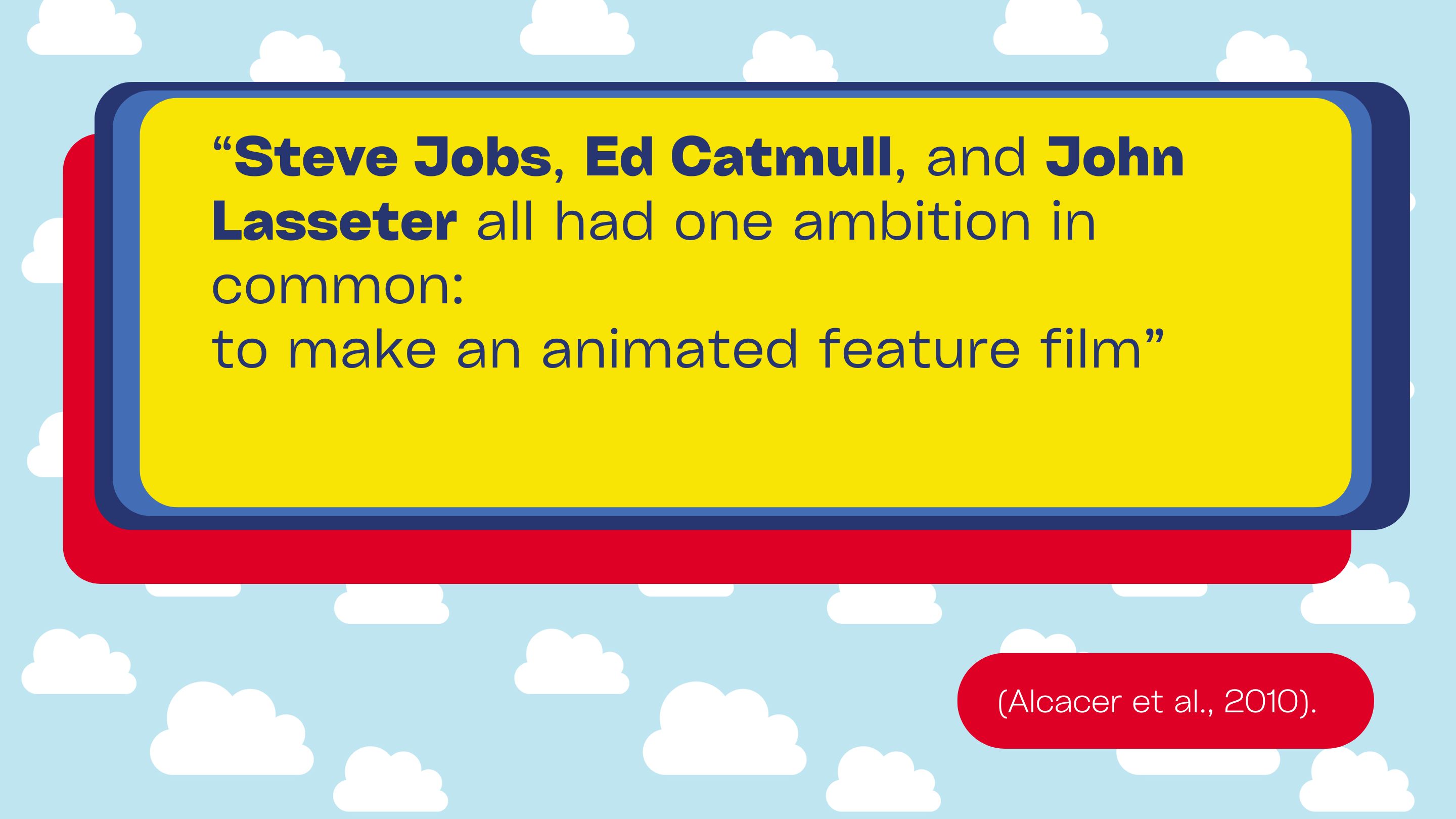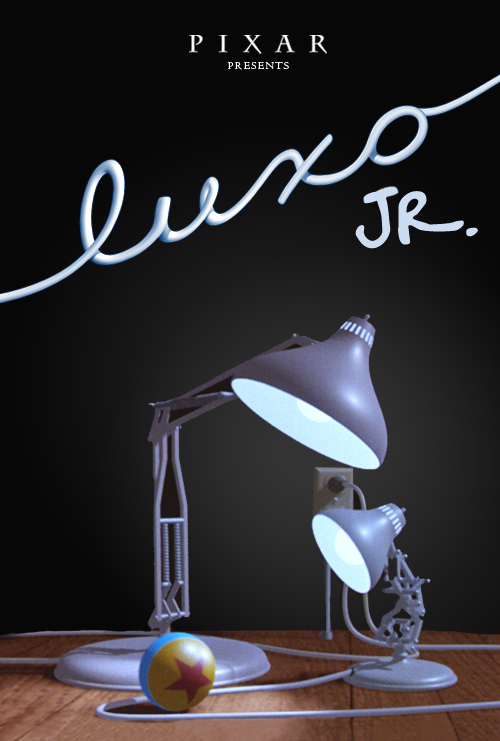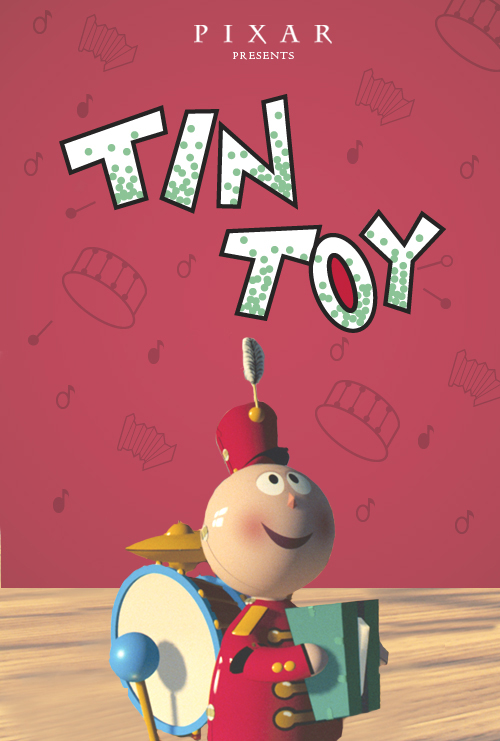

Ed Catmull was chosen by George Lucas to lead Lucasfilm's Computer Division. He was tasked with creating state-of-the-art computer technology for the movie industry (Pixar Animation Studios, n.d.). As a Co-founder of Pixar and the company's "tech guy," Edwin Catmull, was a driving force for the studio's ground-breaking method of animation and therefore (Wise, 2014).
John Lasseter, formerly an animator at Disney Studios, was hired as an "Interface Designer" (Pixar Animation Studios, n.d.). Because of his skill in animated storytelling, Lasseter is known as the team's "animation guy" (Wise, 2014).
Steve Jobs buys the Lucasfilm Computer Division from George Lucas for $10 million (Alcacer et al., 2010). After that, he transformed it into a stand-alone business with 40 employees named Pixar (Pixar Animation Studios, n.d.). Jobs can be regarded as the team's "business-" or "money guy" (Wise, 2014). Pixar was initially intended to be a computer hardware and software company. In the following years, he contributed about $50 million in personal funding to the company (Alcacer et al., 2010). Because of this, Jobs made numerous attempts to sell Pixar while Toy Story was being produced (Wise, 2014). However, after the company finally had the know-how and technology to produce a feature film Jobs secured a collaboration with Disney for Pixar (Wise, 2014).

Disney and Pixar’s relationship began.
The two studios started working together to create CAPS, a computer-animated production system owned by Disney. This turned out to profoundly impact the making of traditional animated films. (Animation Studios Pixar, n.d.)
Since its founding, Pixar has advanced its computer-generated technology and creative storytelling through short films (Alcacer et al., 2010). John Lasseter’s directorial debut of the short film Luxo, Jr. was the first Pixar-produced computer animation film and the first three-dimensional computer animation film nominated for an Oscar (Pixar Animation Studios, n.d.).

Pixar produced its third and Oscar-winning short film called Tin Toy.
Pixar gains experience in pitching, client collaboration, storytelling, and production pipeline development through its commercial work (Pixar Animation Studios, n.d.). However, despite some profit from Pixar Image Computers and advertisements for products like Listerine, Pixar's income remained insufficient to cover its fixed costs (Wise, 2014).
The short film Tin Toy had piqued Disney's interest. Following several meetings between Disney and Pixar, the discussions were taken over by Jeffrey Katzenberg, the studio president (Lasseter et al., 2010). Katzenberg declines Pixar's offer of a half-hour special, A Tin Toy Christmas (Lasseter et al., 2010). He proposed the Pixar team assist the Disney animators in producing a feature film rather than a medium-length movie (Lasseter et al., 2010).
This resulted in Pixar signing a contract with Disney to produce three full-length 3D CG animated films (Alcacer et al., 2010), in exchange for a 10% profit (Lasseter et al., 2010). Disney will own the movie rights in exchange for paying the entire cost of production (Alcacer et al., 2010). Industry analysts believed the movie's budget to be between $10 and $20 million, however, neither company disclosed it (Alcacer et al., 2010). While Pixar continued to generate advertisements and other short materials, including public television advertising (Pixar Animation Studios, n.d.), this deal led to the 1995 Toy Story (Alcacer et al., 2010).
Image Credits:
© 1986-2024 DISNEY / PIXAR